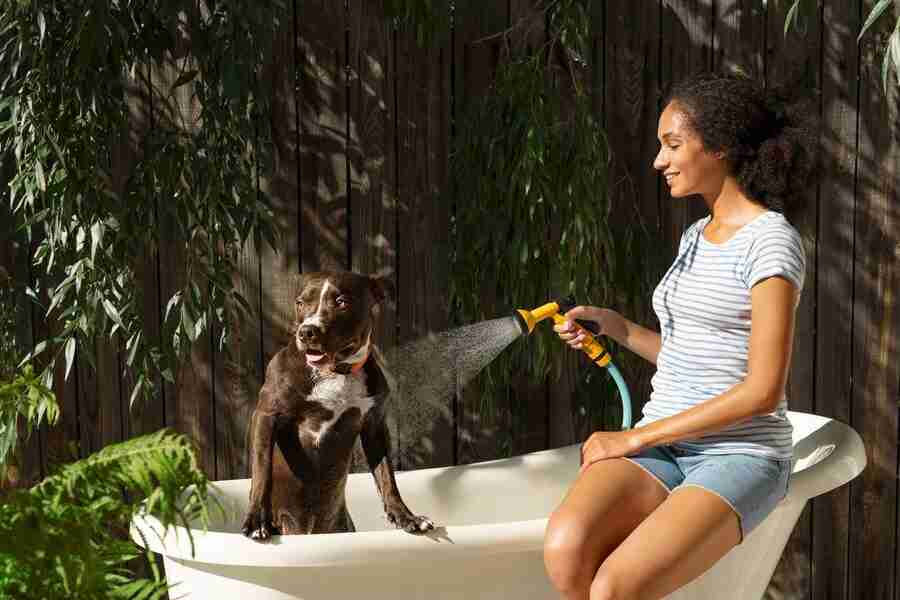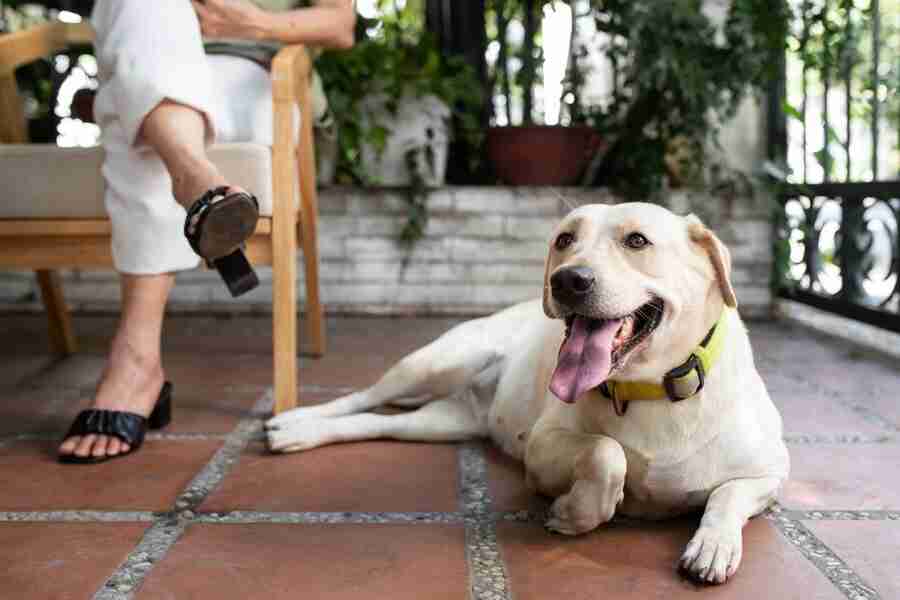
Designing a landscape that accommodates both your pets and your aesthetic preferences requires thoughtful planning and consideration. From creating safe play areas to selecting pet-friendly plants, there are numerous factors to keep in mind to ensure a harmonious outdoor environment for your furry friends. In this guide, we’ll explore essential tips and strategies for crafting a pet-friendly landscape that enhances both the beauty of your outdoor space and the well-being of your beloved companions.
Firstly, understanding your pet’s behaviors and needs is paramount. Whether you have a playful pup or a curious cat, tailoring your landscape design to suit their habits is crucial. This includes providing ample space for exercise and exploration, as well as incorporating features like pathways and designated digging areas to keep them engaged and stimulated. Additionally, selecting durable materials and plants that are non-toxic to pets is essential for creating a safe and enjoyable environment for them to roam freely.
Fencing Solutions for Pet Safety
Ensuring your pet’s safety begins with implementing effective fencing solutions tailored to their needs. Sturdy fencing not only provides security but also helps prevent escape and keeps unwanted intruders at bay. Here are five essential considerations for selecting the right fencing for your pet:
- Height: Opt for a fence tall enough to prevent your pet from jumping or climbing over, typically around 4 to 6 feet high.
- Material: Choose durable materials such as vinyl, wood, or metal that can withstand wear and tear from weather and your pet’s activities.
- Gaps: Ensure there are no gaps or spaces in the fence where your pet could squeeze through or get stuck.
- Visibility: Consider fencing styles that maintain visibility, allowing you to keep an eye on your pet while still providing a barrier.
- Gates: Install secure gates with latches or locks to prevent accidental escapes and ensure easy access for you and your pet.
With these fencing solutions in place, you can create a safe and secure outdoor environment where your pet can roam freely while giving you peace of mind.
Creating Pet-Friendly Play Zones
Designating specific areas within your landscape for pet play can help encourage exercise and enrichment. Incorporate features such as agility courses, interactive toys, and open spaces for running and fetch games. Utilize durable and pet-safe materials for play structures to ensure they withstand your pet’s activity level and chewing tendencies.
Providing ample shade and water stations within these play zones ensures your pet remains comfortable and hydrated during playtime, promoting their overall well-being and enjoyment of the outdoor space.
Choosing Pet-Safe Plants and Materials
When selecting plants and materials for your pet-friendly landscape, it’s crucial to prioritize their safety and well-being. Opting for non-toxic plants and materials can help prevent potential health hazards and ensure a safe environment for your furry friends to explore and enjoy.
- Research pet-safe plants: Before adding any greenery to your landscape, research which plants are safe for pets. Choose options such as spider plants, Boston ferns, and bamboo palms, which are non-toxic and add beauty to your outdoor space.
- Avoid toxic substances: Steer clear of plants known to be toxic to pets, such as lilies, azaleas, and oleander. These plants can pose serious risks if ingested by your furry companions, causing symptoms ranging from mild gastrointestinal upset to severe toxicity.
- Use pet-safe materials: When it comes to landscaping materials, opt for pet-safe options such as untreated wood, natural stones, and pet-friendly mulch. Avoid using cocoa mulch, which contains substances toxic to pets if ingested.
- Consider artificial alternatives: If you’re concerned about potential toxicity or maintenance issues with natural plants, consider incorporating artificial plants into your landscape design. High-quality artificial plants can provide the beauty of greenery without posing any risks to your pets.
- Consult with a professional: If you’re unsure about which plants and materials are safe for your pets, consult with a landscaping professional or veterinarian for guidance. They can offer personalized recommendations based on your specific needs and preferences.

Prioritizing pet-safe plants and materials in your landscape design is essential for creating a safe and enjoyable outdoor environment for your furry companions. By researching pet-safe options, avoiding toxic substances, and consulting with experts, you can design a landscape that enhances both the beauty of your outdoor space and the well-being of your beloved pets.
Implementing Water Features with Pets in Mind
Incorporating water features into your landscape design can provide both aesthetic appeal and recreational opportunities for your pets. Ensure that any ponds, fountains, or water bowls are safely accessible for your pet to drink from and enjoy. Consider installing shallow areas or ramps to facilitate easy entry and exit for pets, especially if they are older or have mobility issues.
Regularly clean and maintain water features to prevent the buildup of algae or bacteria that could be harmful to your pet’s health. Supervise your pet’s interactions with water features to prevent accidents and ensure they remain safe while enjoying this aspect of the landscape.
Designing Shaded Areas for Pet Comfort
Providing ample shade throughout your landscape allows your pet to seek refuge from the sun and prevent overheating during hot weather. Incorporate natural shade elements such as trees, shrubs, and pergolas into your design to create cool, inviting spaces for your pet to relax outdoors.
Position shaded areas strategically near play zones and resting areas to encourage your pet to utilize them throughout the day. Use pet-friendly materials for seating and lounging areas to ensure your pet’s comfort and safety while they enjoy the shade. Consider portable shade options for flexibility and versatility, particularly in areas where natural shade is limited or insufficient.
Minimizing Potential Hazards in the Landscape
Identifying and mitigating potential hazards within your landscape is essential to creating a safe environment for your pets to explore and enjoy. Conduct a thorough assessment of the landscape to identify any potential dangers such as sharp objects, toxic plants, or uneven terrain. Remove or secure hazardous items to prevent accidental injuries or ingestion by curious pets.
Keep gardening tools, chemicals, and other potentially harmful substances stored securely out of your pet’s reach. Regularly inspect the landscape for any new hazards that may arise due to weather or other factors and promptly address them to maintain a safe outdoor environment for your pets.
Incorporating Pet-Friendly Pathways and Walkways
Designing pathways and walkways with your pet in mind enhances their mobility and accessibility throughout the landscape. Choose materials that offer good traction and stability to prevent slips and falls, especially in wet or icy conditions. Opt for wider paths to accommodate both you and your pet comfortably, allowing for easy passage without feeling crowded.
Consider installing lighting along pathways to improve visibility during evening walks and enhance safety for both you and your pet. Incorporate gradual slopes and ramps where necessary to accommodate pets with mobility issues or disabilities, ensuring they can navigate the landscape with ease and independence.
Balancing Hardscape and Softscape Elements
Achieving a harmonious balance between hardships and softscape elements in your landscape design enhances both visual appeal and functionality for you and your pets. Integrate a mix of hardscape features such as patios, pathways, and retaining walls with softscape elements including grass, flowers, and shrubs to create a dynamic and inviting outdoor space.
Consider the preferences and behaviors of your pets when selecting materials and plants to ensure they complement each other effectively. Use hardscape elements strategically to define boundaries and create designated areas for different activities such as play, relaxation, and exploration. Incorporate softscape elements to soften the hardships and add texture, color, and natural beauty to the landscape while providing sensory stimulation for your pets.
Maintaining a Clean and Hygienic Outdoor Environment
Regular maintenance and upkeep of your landscape are essential for ensuring a clean and hygienic outdoor environment for your pets. Implement a routine cleaning schedule to remove pet waste, fallen leaves, and debris from the landscape to prevent odors and potential health hazards. Use pet-safe cleaning products to sanitize outdoor surfaces such as patios, decks, and furniture regularly.
Keep outdoor pet areas well-drained and ventilated to prevent the buildup of moisture and minimize the risk of mold or mildew growth. Trim and maintain plants and vegetation to prevent overgrowth and minimize hiding places for pests such as ticks and fleas. By maintaining a clean and hygienic outdoor environment, you can create a healthier and more enjoyable outdoor space for both you and your pets to enjoy year-round.
Enhancing Security Measures for Pet Protection
Implementing effective security measures in your landscape design helps protect your pets from potential dangers such as predators, intruders, and traffic hazards. Install secure fencing around the perimeter of your property to prevent pets from wandering off and encountering risks beyond your control.
Consider adding motion-sensor lighting and surveillance cameras to deter intruders and provide additional security for your pets, especially during nighttime hours. Use secure gates and locks to restrict access to outdoor areas and prevent unauthorized entry or escape. Incorporate microchip technology and identification tags for your pets to facilitate their safe return in the event they become lost or separated from you. By enhancing security measures in your landscape, you can provide peace of mind knowing that your pets are protected and secure within their outdoor environment.
Designing a pet-friendly landscape requires a combination of thoughtful planning, knowledge of pet behaviors, and careful selection of materials and features. By implementing fencing solutions tailored to your pet’s needs, creating designated play zones, and choosing non-toxic plants and materials, you can ensure a safe and enjoyable outdoor environment for your furry companions. Additionally, incorporating water features with pets in mind, providing shaded areas for comfort, and minimizing potential hazards further contribute to their well-being.
For expert guidance and assistance in designing a pet-friendly landscape, contact High Quality Fence at 209-815-9015 or email us at info@highqualityfence.com. Let’s work together to create a landscape that not only enhances your property but also ensures the safety and happiness of your beloved pets.


